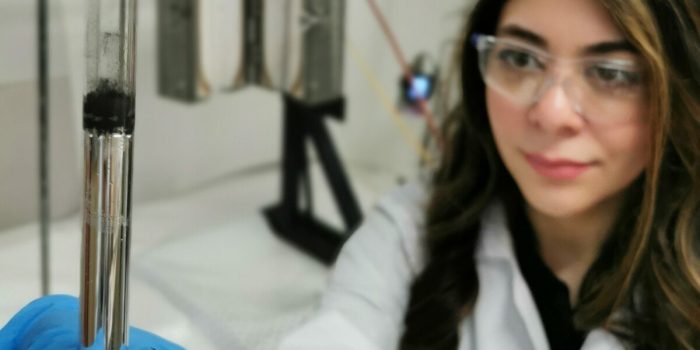Many techniques have been employed to try and reduce the release of CO2 from heavy industries with the intent of mitigating the effects of climate change. Although CO2 has been injected into geological formations for several decades for various purposes, that includes increased oil recovery, the long-term shortage of CO2 is a relatively new concept.
According to a press statement, RMIT University researchers in Australia have developed a new decarbonization technique that turns the CO2 into solid carbon instantaneously. The team claims that their method could soon be deployed in the procedures used to reduce the ongoing effects of the climate crisis.

According to the team, their method is radically more efficient. It is so because the new tech can break down CO2 to carbon in an instant. This method is based on an existing experimental carbon capture technique that involves liquid metals as a catalyst.
Associate Professor Torben Daeneke, a co-lead researcher of the project has mentioned, “Our new method still harnesses the power of liquid metals but the design has been modified for smoother integration into standard industrial processes.”
Researchers have used liquid metal heated to between 212 – 248°F. In order to start the chemical reaction, CO2 was then injected into this heated metal, as a result of which solid carbon flakes were seen on the surface and it only took a second. Initially CO2 gas bubbled up to the surface of the liquid metal that resulted in those solid flakes. Daeneke continued with these words, “We hope this could be a significant new tool in the push towards decarbonization, to help industries and governments deliver on their climate commitments and bring us radically closer to net zero.”
RMIT has signed a 2.6 million USD agreement with the environmental tech startup, ABR, aimed at commercializing the technology. This method is among those carbon capture methods that are in the process of being commercialized globally.
As far as some other efforts are concerned, researchers from the University of California, Los Angeles, have announced that they have developed a technique that resembles a seashell forming process to suck Carbon out of the oceans. This technique was quite good as it includes more absorption of Carbon from the outside as it is having less carbon inside the oceans. Moreover, another carbon capture facility technique from a team in Scotland will remove up to 1 million tons of CO2 from the atmosphere per year.

Scientists are providing awareness on this method that it must not be viewed as a replacement for the widespread initiatives for controlling the emissions of the fossil fuel industry. For example, the U.S. Center for International Environmental Law has written that carbon capture could act as a “dangerous distraction” that could delay the transition away from fossil fuel consumption


